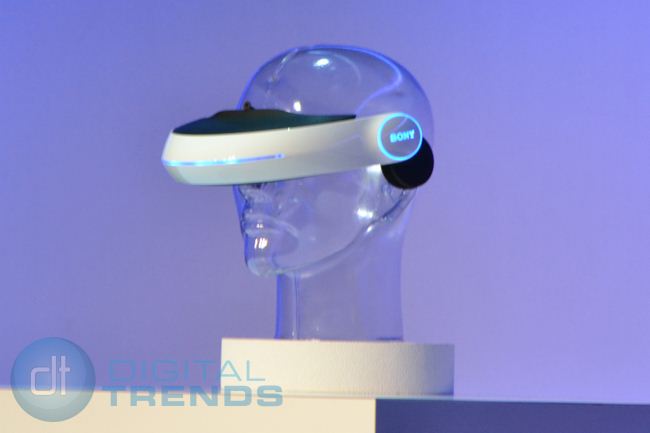
The move to 3D displays is not going away anytime soon, especially not if Sony has anything to say about it. Pioneers in the 3D field, today at CES, Sony debuted its next generation of products, and the emphasis was heavily placed on 3D. If it has a visual display and Sony makes it, odds are it will feature 3D. But Sony understands that the current wave of 3D is limited by the necessity to use glasses to access the technology, and they are already planning on the next step of the 3D revolution.
Along with the new televisions and monitors that will soon be heading to the stores, Sony showed off a few prototype devices that may represent the future of 3D entertainment. Some of the devices will reach the consumers before others, including a portable blu-ray player that has a 3D display that does not require glasses. That should be out later this year, but the technology for glassless 3D in small displays is becoming more common—just look at the upcoming Nintendo 3DS, which was unveiled early last year with a glassless 3D display, and should be officially released within the next few months (we hope). The real trick is to expand that glassless technology in a way that replaces the current 3D tech that requires the glasses. Sony has a few ideas on how to do that.
The first is fairly obvious in design, but difficult in practice. At CES today, Sony showed off a new 56 inch 4K LCD, a 46 inch 2K, and a 24.5 inch 2K TV, all feature 3D, and all do so without glasses. The sets broadcast the same 3D video that we currently see on home devices, but each set contains a specific glass display, just as the Nintendo 3DS does, but on a bigger scale. The technology is there, but it is not without its problems.
The first and most obvious issue is the price. Sony would love to manufacture these TVs and sell them to everybody. Without the glasses, the technology would almost certainly explode. More people would be willing to purchase TVs with 3D capabilities, which would encourage more content to be released in 3D—it is a win-win for everybody.

But the technology is not easy or cheap to produce, and the sets can still run into the thousands of dollars for even a basic model. Another issue is that the special screen on the TV that makes the 3D possible needs a much higher resolution to match the output of the current generation of 3D, so you need the super HD quality of a 4K TV, four times the resolution of current HD TVs. Again, the cost becomes wildly prohibitive, and 4K TVs are still running several tens of thousands of dollars. Even the lower level of the glassless TVs require a 2K resolution, which is also extremely expensive. Regardless, the same was true of the current generation of 3D sets several years ago, so the odds are good that the prototype 3D TV sets will one day replace the current 3D TVs.
Another idea that Sony debuted is the 3D headset (pictured above). The unit displayed was a very basic prototype that did not even feature a way to use the device without constantly holding it to your face, but the technology might be something that will hit the market in the next few months or years. The idea is simple, and has been around for awhile. In fact, if anyone owned a Nintendo Virtual Boy (not that there are many of you), will recognize the concept of strapping a visor to your head that shows you 3D images.
The Sony headset, which did not even have a product name yet, features a visor that pumps out HD 3D video and 5.1 surround sound via headphones. When you wear it, you are immersed by the device. Odds are there will need to be health studies to determine if there are any elevated risks to your sight, but as the headset can connect to any HD device from a blu-ray player to a PS3, this product isn’t likely to disappear anytime soon.
Oh course, these are all prototypes, and as anyone that follows concept cars can tell you, just because there is a prototype does not mean that they will be produced. nonetheless, it is an interesting look at where Sony plans to take us in the next few years.


